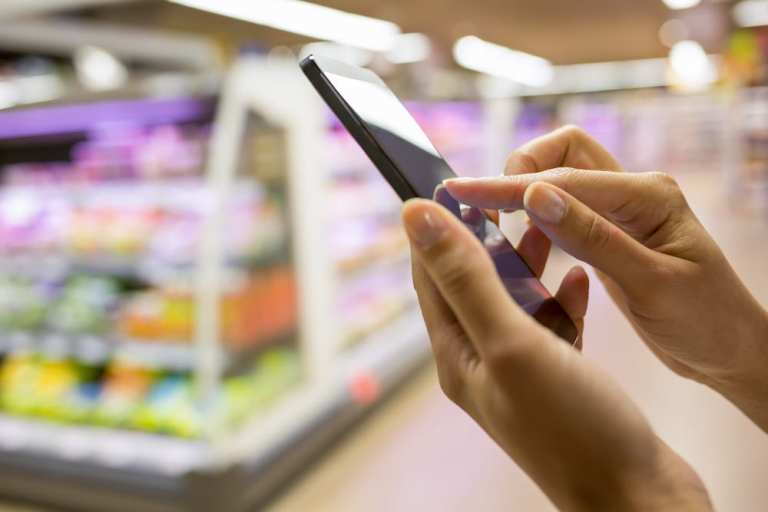Mobile commerce has become part of the daily routine for many consumers — who are not just using devices to shop on the go, but also in-store and for a variety of product categories.
In the 2019 edition of the Remote Payments Study, PYMNTS collected and analyzed survey data from 2,300 American consumers to see how shopping habits have changed and evolved from last year.
Once upon a time, it was predicted that the rise of smartphones would spell the end of traditional retail, but that hasn’t really happened. In the study, nearly half (48 percent) of consumers who own smartphones use them while shopping in stores.
How are consumers using mobile devices in-store? Nearly half (46.8 percent) use them to access in-app discounts, while slightly fewer (43.3 percent) look up product information. And roughly one-third use their devices to “showroom” — one of retailers’ biggest fears a few years ago — to compare prices at competitors. But they don’t necessarily buy items from other stores on the spot.
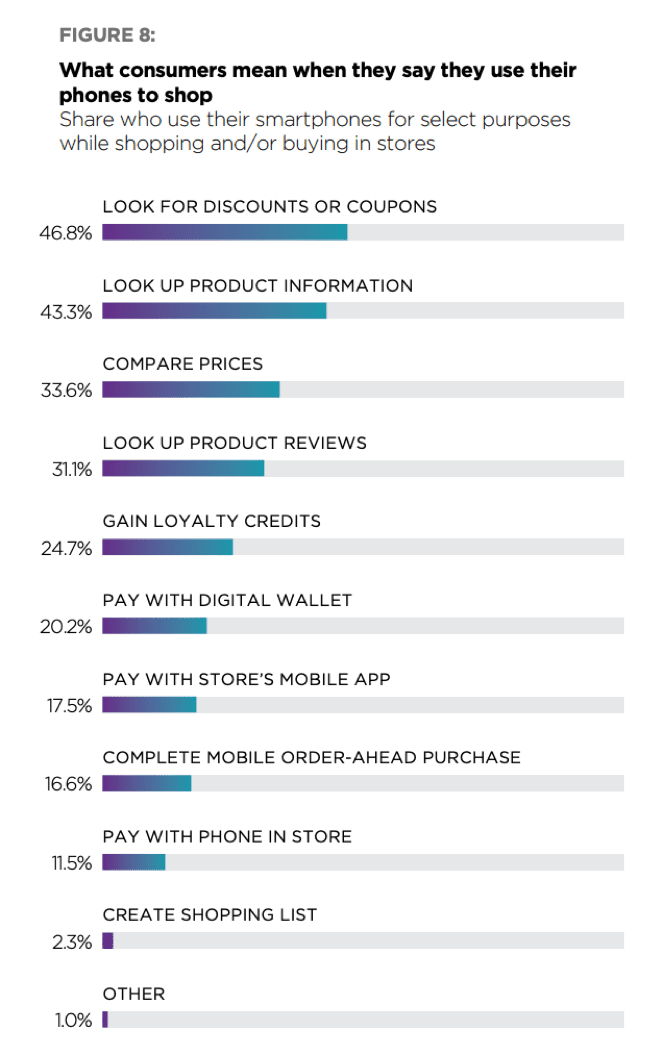
These activities range in frequency, though. Close to half (48.1 percent) said they look for discounts every time they are in a store, 35.5 percent look up product information every time they are in a store, 39.8 percent reported comparing prices some of the time and 27.6 percent said they look up product reviews once in a while.
This reinforces one of the findings from the report: that consumers tend to purchase through the channels on which they shop. What this means is that consumers who purchased items on smartphones were most likely to have first found them on smartphones. Conversely, those who paid for their most recent purchases in stores were most likely to have first discovered those items in stores.
Advertisement: Scroll to Continue
In-store smartphone usage also seems to relate to brick-and-mortar foot traffic, which goes against the narrative that smartphones are killing physical retail.
For instance, when asked how often they visit brick-and-mortar shops, 17.7 percent of consumers who used smartphones in stores said they do so daily and 63. 8 percent said weekly. This is a considerably higher share than the 5.8 percent and 63.2 percent, respectively, among those who do not use smartphones in stores.
This implies that retailers shouldn’t fight in-store smartphone usage, but instead encourage it by enhancing the mobile experience.
Sixty-three percent of the consumers who first discovered their last retail purchases in physical stores ended up paying in those stores, for example. Just 24.5 percent purchased items they’d found in stores on their smartphones, and 26.2 percent purchased them on their personal computers.
Digital wallet usage is still fairly low. Just 5.6 percent of consumers in Q1 2019 used them to make a retail purchase. Most use stored credit cards (38.9 percent) and debit cards (38.7 percent).
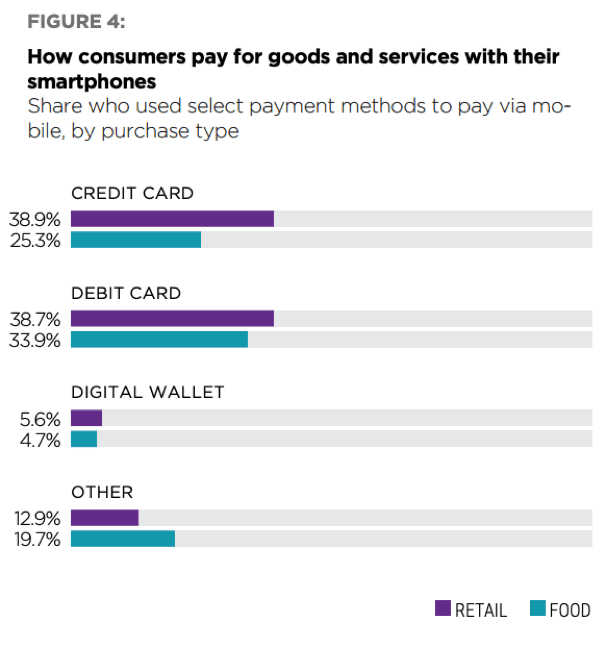
In Q1 2019, nearly half of consumers (46.4 percent) manually entered their payment information into their phones, an increase from 43.2 percent in Q1 2018.
When consumers use mobile wallets, PayPal is the most popular; 61.8 percent who have mobile wallets had set PayPal up on their smartphones in Q1 2019, a 3.1 percentage point increase over Q3 2018. Usage of Apple Pay and Google Pay stayed fairly consistent over those three quarters.
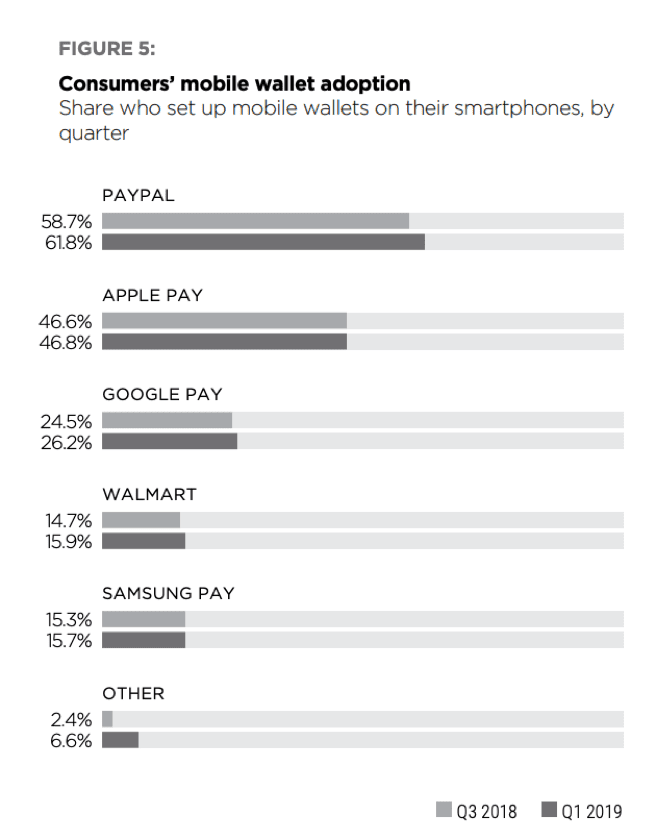
Despite low mobile wallet usage, consumers aren’t dissatisfied with the technology. More than three-fourths (77.4 percent) of those whose latest purchases were retail products and who used smartphones to pay report being “somewhat” to “extremely” pleased with them. This is slightly more than the 75.2 percent whose last purchases were food items.
Very few (12.8 percent) flat out said they were dissatisfied with mobile payments for retail goods, while more were dissatisfied with mobile payments for food (18.2 percent).
Who is more likely to make remote purchases? According to the study, consumers with annual incomes exceeding $100,000 were more active remote shoppers for retail goods (50.5 percent) and food (44.5 percent).
By age, smartphone usage tends to transcend generational differences, and consumers in all groups had relatively high smartphone usage rates; 59.7 percent of Gen Z and 52.9 percent of bridge millennials bought via smartphone.
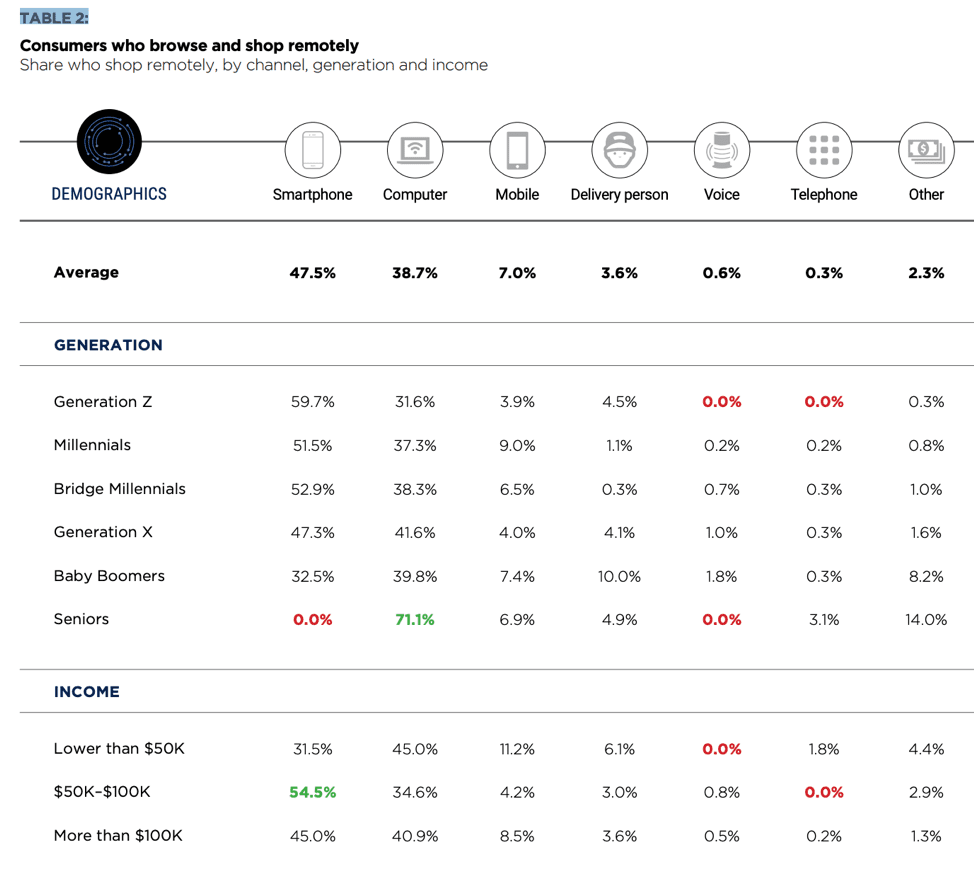
Seniors were much more likely to buy via computer (71.1 percent) and millennials had the highest usage of mobile generally (9.0 percent). The study found low usage of voice-enabled commerce across all ages.
Smartphones have become the digital commerce tool of choice among all ages and most income levels, whether to transact, browse and research or to compare prices in-store.
